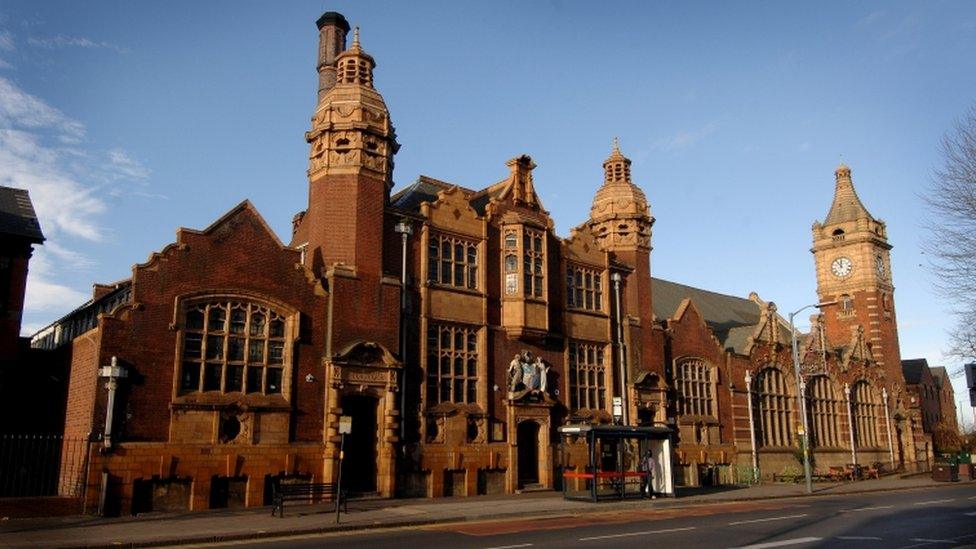Moseley Baths and Yorkshire mansion under threat
- Published

Moseley Road Baths are scheduled to close in 2016
An Edwardian swimming baths and an 18th century country mansion are among the most under-threat buildings in the world, according to a heritage group.
Moseley Road Baths in Birmingham and Wentworth Woodhouse near Rotherham, Yorkshire, are listed on the 2016 World Monuments Watch.
The list hails the pools as a "rare survival" and the mansion an "architectural masterpiece".
Maintenance bills threaten both.
Moseley Road Baths is the oldest of only three Grade II-listed swimming pools still in use in the UK.
Owned by Birmingham City Council, the building is scheduled for closure in 2016.
The Friends of Moseley Road Baths is campaigning for the repair and restoration of the complex so it can continues as an operational swimming pool.

Wentworth Woodhouse needs £42m of repairs
An estimated £42m needs to be spent on Wentworth Woodhouse to address structural damage, plasterwork falling from the ceilings and wet and dry rot taking hold in the historic interiors, said World Monument Watch.
The Wentworth Woodhouse Preservation Trust's long-term vision proposes extensive public opening of the house and gardens and residential, business and events uses for various parts of the estate.
John Darlington, executive director of World Monuments Fund Britain said: "Wentworth Woodhouse is an extraordinary building. Its enormous scale is matched by the historic importance of its interiors - representing a roll-call of great British craftsmen - and by the intriguing stories of politics, industry and social change that reverberate within."
He added: "Moseley Road Baths is a rare survival: a public building that echoes the class and gender divisions of the early 20th century, but one that is still cherished by local communities today."
The 2016 World Monument Watch list also includes the Kua Ruins in Tanzania - the remains of a medieval Swahili town at risk from the effects of a harsh climate and looters.
Also on the list is Dalieh Raouche in Beruit, a coastal promenade that is the latest victim of a development frenzy that has destroyed many of the city's open spaces.
And the near-forgotten remains of World War II concentration camps in Italy are listed as at risk.
- Published27 November 2013

- Published23 May 2015
